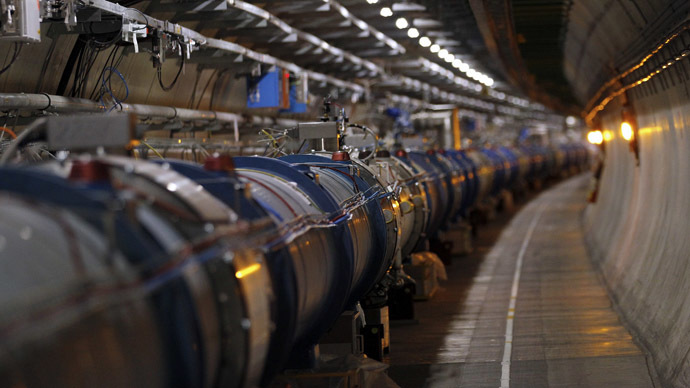Breakthrough: Physicists calculate mass of heaviest elementary particle

Scientists participating in four different particle collider experiments joined forces, combined their data, and did together what would've been much harder to do alone: Calculate the mass of the top quark, the heaviest elementary particle.
Announced at physics conference in Italy last week, the calculation has been hailed as in important step that will enable scientists to continue other experiments intended to provide insight into the nature of the universe. Top quarks – along with up, down, charm, and strange quarks – combine to form subatomic particles like protons and neutrons.
According to LiveScience, the discovery was made through cooperation between four different experimental groups – ATLAS, CDF, CMS, and DZERO – all of which used CERN’s Large Hadron Collider (LHC) in Geneva, Switzerland, and Fermilab’s Tevatron in the United States to observe top quarks.
These two particle colliders are the only devices capable of producing the elementary particle, which is now believed to be 100 times the mass of a proton. Specifically, scientists pinned the top quark’s mass at 173.34 (+/- 0.76) gigaelectronvolts divided by the speed of light squared.
As noted by UCR Today, one of the scientists involved in the research, University of California Riverside’s Stephen Wimpenny, stated this is “the first analysis to combine the results from the four different big experiments at the LHC and the Tevatron … The results significantly improve the precision of the mass of the top quark.”
With this formulation in hand, LiveScience reports researchers will be able “to test the mathematics of quantum connections among the top quark, the Higgs particle — the particle detected by the LHC in 2012, which explains how other particles get their mass — and the W boson, the carrier of the electroweak force.”
Additionally, scientists will be able to examine how the top quark’s mass affects stability in the Higgs field – the same field associated with the Higgs boson, which gives matter its mass – which has potential repercussions for our understanding of how the universe evolved.
Although the four particle collider experiments had each revealed their own results before, working together allowed the 6,000 scientists involved from more than 50 countries to settle on one top quark value.
"Collaborative competition is the name of the game," Rolf Heuer, Director General of CERN, said in a statement. "Competition between experimental collaborations and labs spurs us on, but collaboration such as this underpins the global particle physics endeavor and is essential in advancing our knowledge of the universe we live in."














